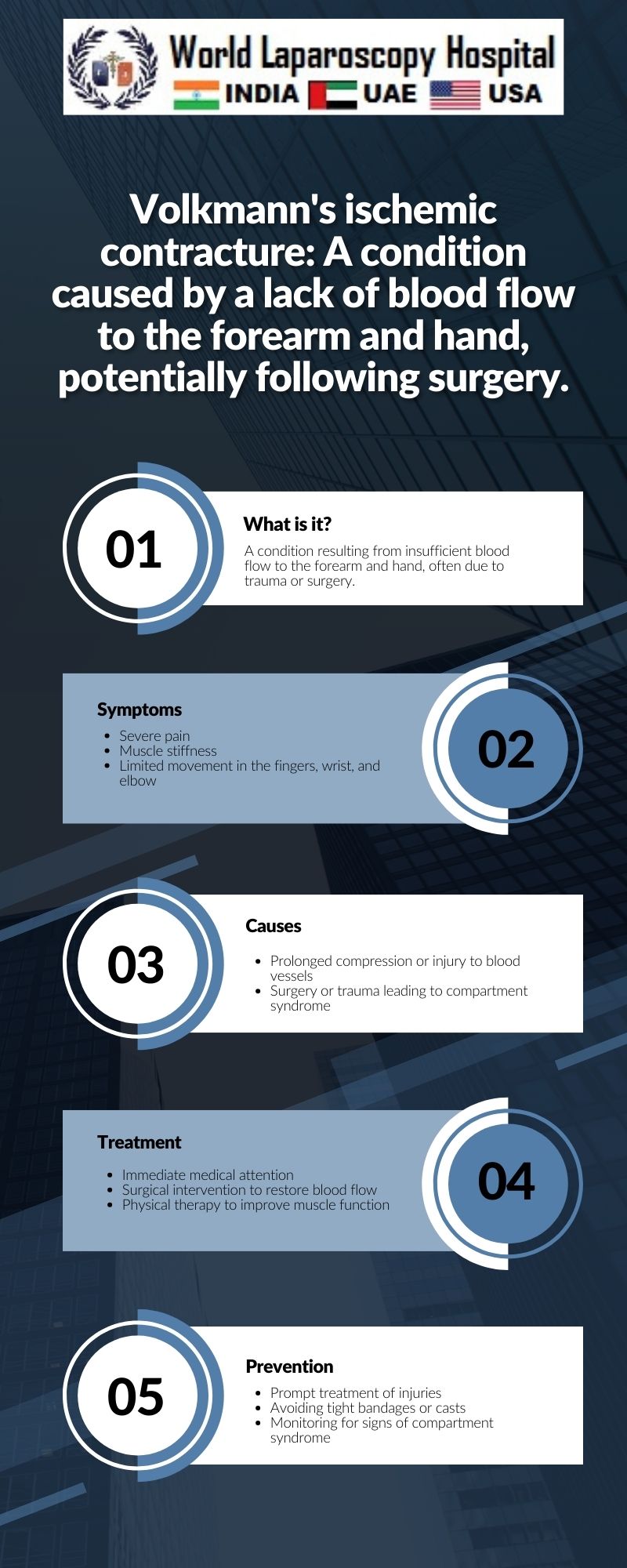Introduction
Volkmann's ischemic contracture, also known as Volkmann's contracture, is a debilitating condition characterized by the permanent shortening and deformity of muscles in the forearm and hand. This condition is caused by the inadequate blood supply to these areas, leading to tissue damage and scarring. It is most commonly associated with traumatic injuries, particularly fractures or dislocations of the elbow or forearm, but can also occur as a complication of surgery or other conditions that cause a decrease in blood flow.

Anatomy and Physiology of the Forearm and Hand
To understand Volkmann's ischemic contracture, it is important to first understand the anatomy and physiology of the forearm and hand. The forearm is composed of two long bones, the radius and ulna, which articulate with the humerus at the elbow joint. These bones are surrounded by muscles that enable movement of the wrist and fingers. The hand consists of the carpal bones, metacarpal bones, and phalanges, along with muscles, tendons, ligaments, and nerves that control movement and sensation.
Causes and Risk Factors
Volkmann's ischemic contracture is primarily caused by the obstruction or damage to the brachial artery or its branches, leading to a decrease in blood supply to the forearm and hand. This can occur due to various reasons, including:
Traumatic injuries:
Fractures or dislocations of the elbow or forearm can damage blood vessels and lead to ischemia.
Compartment syndrome:
Increased pressure within the muscles of the forearm, often following trauma or surgery, can compress blood vessels and reduce blood flow.
Prolonged tourniquet use:
The use of a tourniquet during surgery or medical procedures can restrict blood flow to the forearm and hand if left in place for too long.
Infection:
Severe infections in the forearm or hand can cause inflammation and swelling, leading to compression of blood vessels.
Vascular diseases:
Conditions such as atherosclerosis or vasculitis can narrow or block blood vessels, reducing blood flow to the forearm and hand.
Symptoms and Diagnosis
The symptoms of Volkmann's ischemic contracture typically develop gradually and may include:
Pain in the forearm and hand, especially with movement.
Swelling and bruising.
Limited range of motion in the fingers, wrist, and elbow.
Muscle weakness and stiffness.
Visible deformity of the forearm and hand.
Diagnosis of Volkmann's ischemic contracture is based on a physical examination, medical history, and imaging tests such as X-rays or MRI scans. These tests can help identify any fractures, dislocations, or other structural abnormalities that may be contributing to the condition.
Treatment and Management
Early recognition and treatment of Volkmann's ischemic contracture are crucial to prevent permanent disability. Treatment options may include:
Splinting and immobilization:
Immobilizing the affected limb with a splint or cast can help reduce pain and prevent further damage.
Physical therapy:
Gentle exercises and stretching can help improve range of motion and prevent stiffness.
Medication:
Pain relievers and anti-inflammatory drugs may be prescribed to manage pain and inflammation.
Surgery:
In severe cases, surgery may be necessary to release tight muscles, repair damaged blood vessels, or correct deformities.
Complications and Prognosis
Without prompt treatment, Volkmann's ischemic contracture can lead to permanent disability and loss of function in the affected limb. Complications may include:
Permanent muscle and nerve damage.
Joint stiffness and deformity.
Chronic pain and disability.
The prognosis for Volkmann's ischemic contracture depends on the severity of the condition and the promptness of treatment. Early intervention can help prevent long-term complications and improve outcomes.
Prevention Strategies
Preventing Volkmann's ischemic contracture involves minimizing the risk factors that can lead to decreased blood flow to the forearm and hand. This includes:
Prompt treatment of traumatic injuries to the elbow or forearm.
Avoiding prolonged use of tourniquets during surgery.
Monitoring for signs of compartment syndrome and treating it promptly.
Managing underlying vascular diseases and infections effectively.
Conclusion
Volkmann's ischemic contracture is a serious condition that can result in permanent disability if not treated promptly. Understanding the causes, symptoms, and treatment options for this condition is crucial for healthcare professionals to provide timely and effective care to patients at risk. By implementing preventive strategies and promoting early intervention, healthcare providers can help reduce the incidence and impact of Volkmann's ischemic contracture on individuals' quality of life.